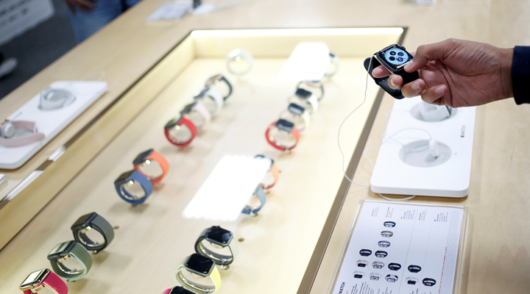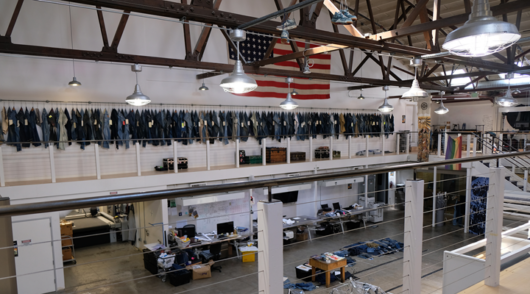Australian retail businesses have been warned they are missing out on sales by reacting too slowly to customer trends – and that poor retail demand planning is resulting in unnecessarily high levels of capital tied up unproductively in unsold inventory in warehouses and stores.
Jamie Cormack, founder and CRO at Quantiful, a developer of AI-powered demand planning software, told Inside Retail that using AI to predict demand is the only technology capable of deriving insight from large data sets to ensure the future of retail businesses.
“Cloud technology companies have provided otherwise inaccessible computational power, this allows companies like Quantiful to develop AI platforms that can run trillions of simultaneous forecasts and include the influence of external data sets.”
Cormack, who has a background in supply chain architecture and management managing large enterprise supply chains in many markets around the world, says relying on old-school forecasting methods using spreadsheets or native capability in larger ERP systems may have worked well in the 1980s and 1990s, but today’s climate is too complex for these legacy systems to keep up.
Fragmented markets, volatile consumers
“Markets are becoming increasingly fragmented, and as a result, consumer and market behaviour is more difficult to predict. Brands have more access to consumers through different mediums, and consumers have broader access to products and brands through e-commerce. So relying on traditional methods is highly manual, opinion based and therefore fraught with bias”.
Enter AI, specifically Quantiful’s unique software solution. “The whole premise of our tool is around why retailers are so poor at forecasting what consumers are going to buy at a time when we have never had so much data on consumer behaviour and the leading indicators of market demands.”
Cormack says it is all too common for retailers to cluster store categories by size or transactional velocity of the store instead of assorting products within a store based on the specific customer requirement.
“The result is that you end up with the wrong stock in the wrong quantities at the wrong store – the resulting impact is aged and obsolescent stock or stock availability problems.”
Quantiful set out to solve this problem by extracting data on market buying behaviour, starting with the more consumer-focused sources like social media and search platforms, then combining it with retail clients’ sales transactions, to predict how consumers will buy products in the future. Using AI, the company’s solution plans and monitors the location of every single SKU in every location, analysing changing buying behaviour and therefore demand patterns in near real-time. Cormack says the revelation is why not be alerted to changing buying behaviours in advance of them ending up as inventory issues?
Customers using Quantiful’s solution have reported a 35 to 40 per cent improvement in the accuracy of planning, a doubling of stock turn and a 12 per cent increase in stock availability
Take the hypothetical example of a shoe retailer that signs up for Quantiful’s software. Quantiful will start by researching the company’s market positioning, its store network, and its supply chain to ascertain why it may be struggling to balance demand and supply. It will analyse three years of sales and stock-keeping data and feed in a year’s worth of social media, search, weather and macroeconomic data (which every client can access when signing on to Quantiful’s solution).
“We will assess the retailer’s sales transactions against the way that people responded to their products before they purchased them,” says Cormack. The result is a unique algorithm shaped to suit the business.
Factors taken into account include analysing historical stock levels, with the premise always in mind being that even if there were no sales of an item at a particular time, that may not mean there was no demand – it might be because there was no stock to sell or it was in the wrong location.
When Quanitful presents the retailer with the results, estimates the retailer’s sales had it been using the company’s AI-driven solution – and the impact on freeing working capital by not keeping too much stock on hand – the typical response is “No, that’s too good to be true”, Cormack tells Inside Retail.
Spoiler alert: It’s not.
How AI can manage 15.6 million SKUs at once in real-time
One Quantiful client has more than 200,000 active SKUs and 60 stores, which equates to 15.6 million SKU locations the company is forecasting simultaneously.
Converting to AI-drive demand planning has resulted in the company doubling its warehouse stock turn.
The economics of this performance speak for themselves. $1 billion of goods annually, and with a stock turn of two, they were holding around $500 million in stock. At five turns, that’s equivalent to $200 million in held inventory. “So Quantiful can potentially release nearly $300 million in working capital so the company can now invest in other areas that offer a higher return on investment.”
Furthermore, with more accurate demand forecasting, there is less need to discount stock that is slow to sell.
Cormack does not pretend to present his company’s AI solution as a panacea for a retailer’s entire product pricing and promotional strategy.
“We need to be honest about what AI is. It is not an intuitive agent that can predict what you need to promote. There is still a role that a human has to play. But the more time that a human can spend managing products and planning promotions, the better. Set AI up to perform the roles a human is unnecessarily performing, and get our human resources working on strategically important issues.”
“This retailer has maintained the same level of stock availability while reducing its working capital and – in an era where many retailers in New Zealand are suffering from falling sales and shrinking profits in tough economic times – there has never been a more important time to improve the productivity of our workforce and performance tools”.
“Now it is using one single-page application to run all of its forecasts, which means everybody is using the same tool so there is a single source of truth. We’ve moved away from numerous spreadsheets per planner, and that is good for two reasons: One, it is feeding back information into our algorithms so we can better understand how customers behave and how promotions travel. But secondly, when somebody leaves the business, there is a nice continuity of resources because you’ve got this big repository of what people did over a product’s life cycle,” explains Cormack.
Imagine a shoe retailer with 100 stores and 500 products, he suggests. Each of those products likely comes in 10 sizes, and there may be five colour options. “Suddenly, you’re trying to forecast 25,000 SKU locations using one demand planner in a company of this size. So human productivity is the biggest problem in dealing with that level of operational complexity.”
For every level of the hierarchy, from senior management to individual store level, the uncertainty of predictions will double. “So you’ll get these impossibly erroneous forecasts.”






